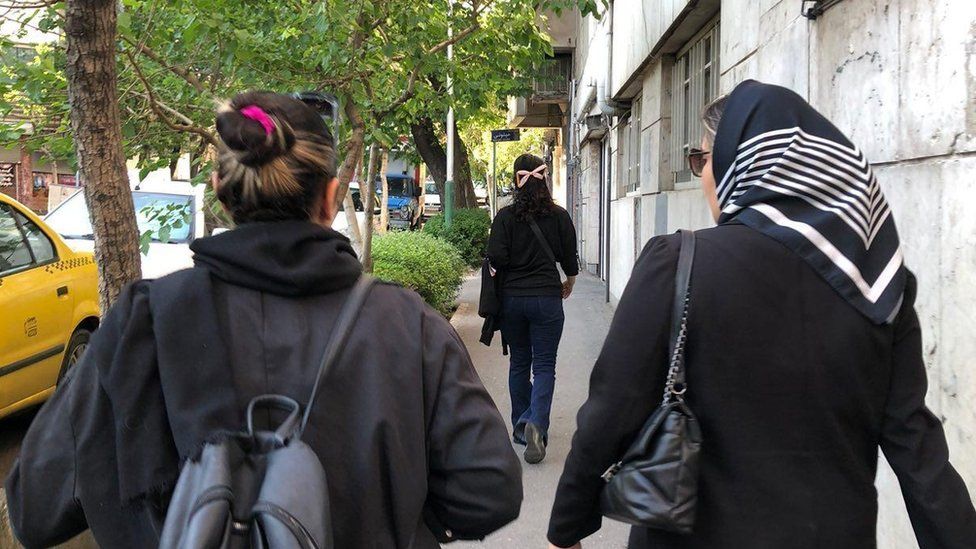Iran Women Defy Hijab Wearing Law Despite Threat
Women in Iran are defying fresh attempts by authorities to use technology to enforce the compulsory hijab wearing dress code that has been a focus of continuing protests across the country.
In April, National Police Chief Ahmad Reza Radan announced the launch of a “smart” programme involving surveillance cameras to identify women failing to cover their hair or wear loose-fitting clothing in public despite the threat of fines or imprisonment.
He warned that those caught breaking the hijab law for a second time would be referred to courts, that cars carrying female passengers with uncovered hair would be confiscated, and that businesses turning a blind eye would be closed.
However, his announcement provoked derisive responses on social media, with women posting photos and videos of themselves not wearing the hijab in public spaces across the country.
Some suggested the growing numbers of women joining their ranks might make it harder for the authorities to push back.
“Do they want to close down all businesses?” said Shervin, a 23-year-old student whose short, choppy hair swayed in the wind on a recent day in Tehran. “If I go to a police station, will they shut it down too?”
Read Also:
Senegal Shuts Consulates Abroad, After Attacks On Missions In US And EU
Still, they worry about risk. The women interviewed only provided their first names, for fear of repercussions.
Vida, 29, said a decision by her and two of her friends to no longer cover their hair in public is about more than headscarves.
“This is a message for the government, leave us alone,” she said.
Iran and neighboring Taliban-controlled Afghanistan are the only countries where the hijab remains mandatory for women. Before protests erupted in September, it was rare to see women without headscarves, though some occasionally let their hijab fall to their shoulders. Today, it’s routine in some areas of Tehran to see women without headscarves.
For observant Muslim women, the head covering is a sign of piety before God and modesty in front of men outside their families. In Iran, the hijab — and the all-encompassing black chador worn by some — has long been a political symbol as well.





